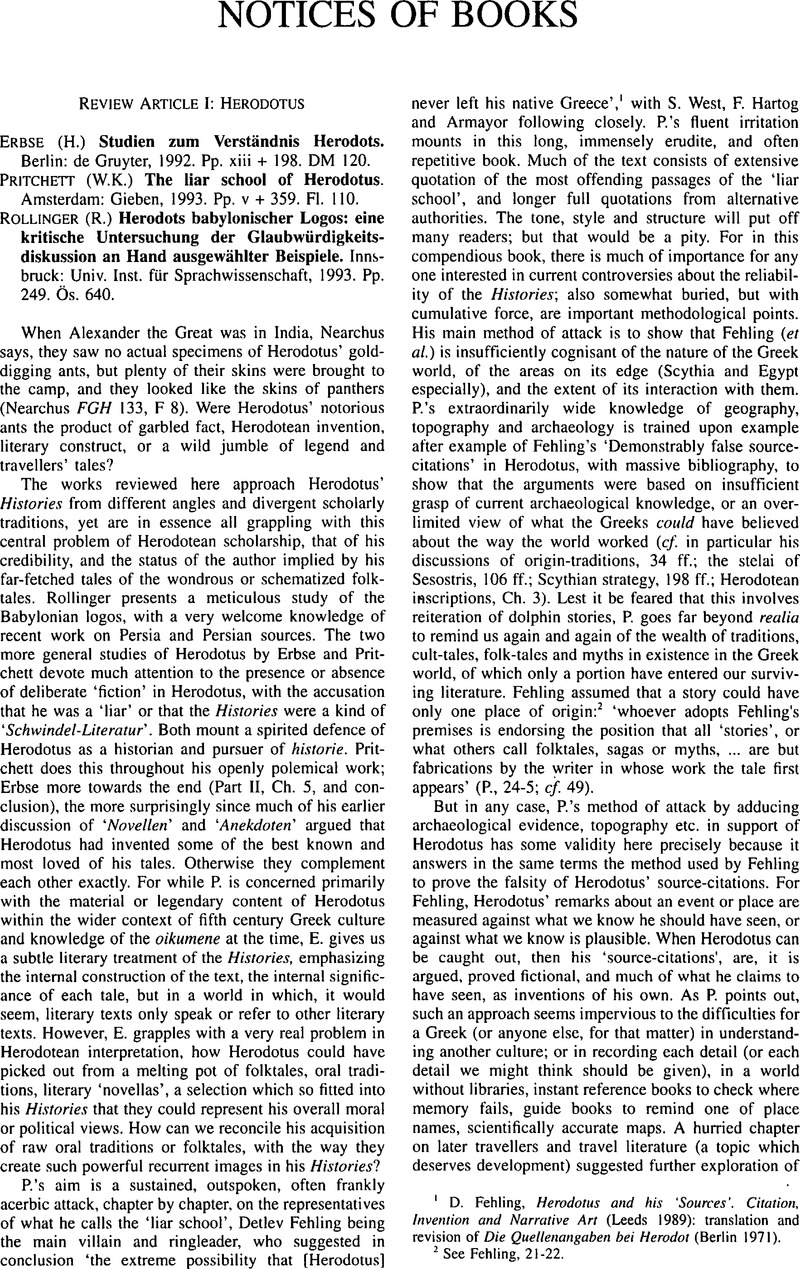Published online by Cambridge University Press: 23 February 2012

1 Fehling, D., Herodotus and his ‘Sources’. Citation, Invention and Narrative Art (Leeds 1989)Google Scholar: translation and revision of Die Quellenangaben bei Herodot (Berlin 1971).
2 See Fehling, 21–22.
3 Marincola, J., Arethusa 20 (1987), 26–32Google Scholar, and 126; Erbse 76 n. 6.
4 Cobet, J., review of Fehling, , Gnomon 46 (1974), 737–46.Google Scholar
5 Erbse is critical of Fehling's approach, esp. his treatment of monuments: Pt.II, ch. 4.
6 Point well made by Flory, S., The Archaic Smile of Herodotus (Detroit 1987) ch. 2.Google Scholar
7 E.g. the recent study by Flory op. cit.; also Griffiths, A., ‘Democedes of Croton: a Greek doctor at Darius' court,’ Achaemenid History II. The Greek Sources, ed. Sancisi-Weerdenburg, H. and Kuhrt, A. (Leiden 1987), 37–51.Google Scholar
8 See especially Vansina, Jan, Oral Tradition as History (London and Nairobi 1985)Google Scholar; Oral Tradition. A Study in Historical Methodology (Harmondsworth 1973; Fr. ed. 1961); Henige, D.P., Oral Historiography (London 1982)Google Scholar; The Chronology of Oral Tradition. Quest for a Chimera (Oxford 1974).
9 Thomas, R., Oral Tradition and Written Record in Classical Athens (Cambridge 1989)CrossRefGoogle Scholar; Evans, J.A.S., Herodotus Explorer of the Past (Princeton 1991)Google Scholar, ch. 3, ‘Oral tradition in Herodotus’; Murray, O., ‘Herodotus and oral history’, in Achaemenid History II. The Greek Sources (1987) (as n. 7 above), 93–115Google Scholar; Gould, J., Herodotus (London 1989).Google Scholar
10 Cf. Hall, E., Inventing the Barbarian (Oxford 1989), ch. 2.Google Scholar
11 See Flory op. cit. (1987) for discussion of folktales with opposing morals. One hint of contradictory versions within in the Histories occurs at I 91, the oracle to Croesus, not entirely consistent with the earlier Gyges story (discussed by Erbse, 6).